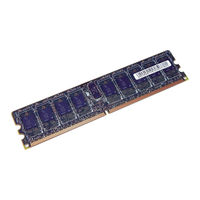HP StorageWorks SVS200 System Manuals
Manuals and User Guides for HP StorageWorks SVS200 System. We have 8 HP StorageWorks SVS200 System manuals available for free PDF download: User Manual, Configuration Manual
HP StorageWorks SVS200 Configuration Manual (183 pages)
HP StorageWorks XP Disk Array Configuration Guide (T5278-96047, May 2011)
Brand: HP
|
Category: Disk array system
|
Size: 2.84 MB
Table of Contents
-
1 Overview
10 -
2 Hp-Ux
14 -
3 Windows
31 -
-
5 Nonstop
52 -
6 Openvms
57 -
7 Vmware
68 -
8 Linux
78 -
9 Solaris
87 -
10 Ibm Aix
101 -
Advertisement
HP StorageWorks SVS200 User Manual (200 pages)
External Storage XP
Brand: HP
|
Category: Disk array system
|
Size: 2.61 MB
Table of Contents
-
-
-
-
-
Device Tree69
-
Device List70
-
-
-
-
Add LU Pane95
-
-
SSID Window96
-
-
Add Paths Window114
-
HP StorageWorks SVS200 User Manual (150 pages)
External Storage XP
Table of Contents
-
Tables
10 -
Figures
14 -
Index
14 -
-
-
-
-
Device Tree55
-
Device List56
-
-
-
-
-
Add LU Pane76
-
SSID Window77
-
Advertisement
HP StorageWorks SVS200 User Manual (116 pages)
Continuous Access XP
Brand: HP
|
Category: Disk array system
|
Size: 3.25 MB
Table of Contents
-
-
-
-
-
Add RCU Pane40
-
-
-
-
Add RCU Pane75
-
-
-
Pairdisplay Pane101
-
Pairsplit-R Pane108
HP StorageWorks SVS200 Configuration Manual (58 pages)
XP Disk Array Configuration Guide for HP-UX
Brand: HP
|
Category: Disk array system
|
Size: 0.85 MB
Table of Contents
-
-
Failover12
-
HP StorageWorks SVS200 Configuration Manual (46 pages)
HP StorageWorks XP Disk Array Configuration Guide: Solaris (A5951-96305, September 2010)
Brand: HP
|
Category: Disk array system
|
Size: 0.94 MB
Table of Contents
-
-
Failover9
-
HP StorageWorks SVS200 Configuration Manual (40 pages)
HP StorageWorks XP Disk Array Configuration Guide for Linux XP24000, XP20000, XP12000, XP10000, SVS 200 (A5951 - 96097, Septembe
Brand: HP
|
Category: Disk array system
|
Size: 0.7 MB
Table of Contents
-
Preface
7 -
-
Partitions12
-
Failover12
-
HP StorageWorks SVS200 Configuration Manual (34 pages)
HP StorageWorks XP Disk Array Configuration Guide: Windows (A5951-96204, September 2010)
Brand: HP
|
Category: Disk array system
|
Size: 0.78 MB
Table of Contents
Advertisement







